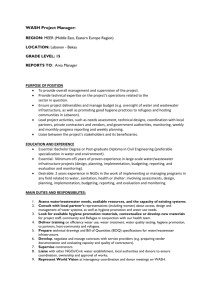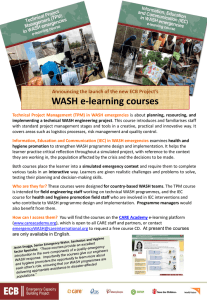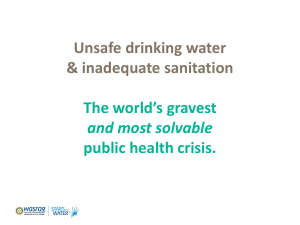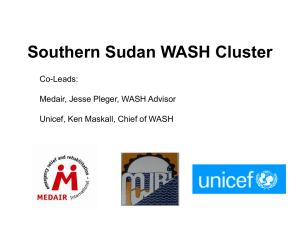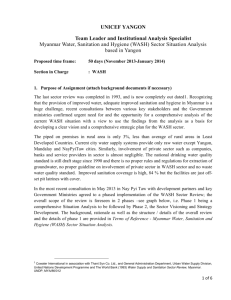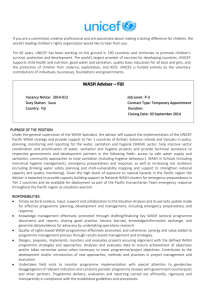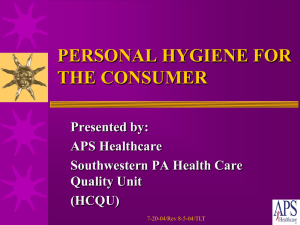Presentation_WASH_in_Schools_Rakhine_Cluster_01Aug2014
advertisement
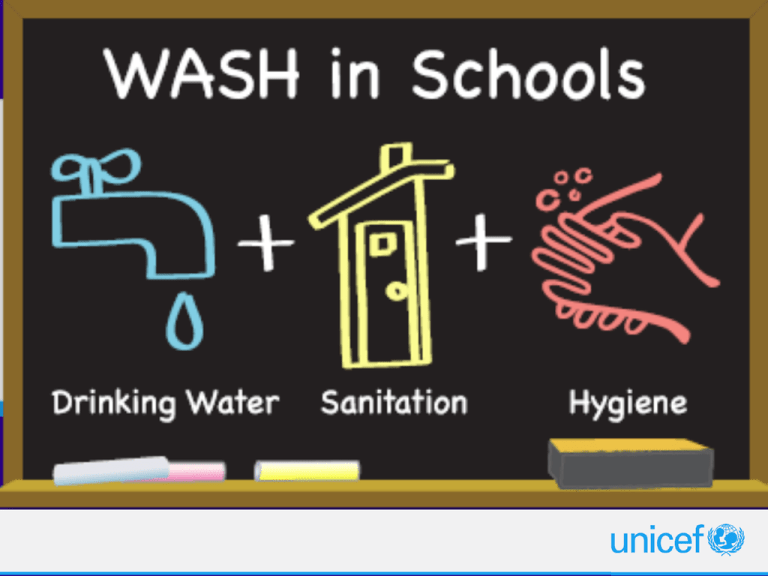
Why? - Children have the right to water, sanitation and health. This right needs to be fulfilled in schools where children spend much of their day. - WASH in schools leads to healthier children and better educational performance - By providing gender separated latrines and access to water and hand washing facilities, students are assured of privacy and dignity, particularly for girls. - The promotion of good hygiene behaviour to children can initiate behaviour changes that last a lifetime WASH in School facts in Myanmar • Only 48% of schools have access to acceptable drinking water quality • Students per toilet ratio range from 39 to 105 and the average is 69 • FGD: most students wash hands without soap as it is not available in schools • Significant rural/urban disparities in the availability of hygiene education classes • Poor toilet design and cleanliness • Poor O & M (source: WASH in schools study, UNICEF 2010) How to improve? Enabling environment: Support Government in developing the policies, standard & guidelines for WASH in schools Demand creation: Hygiene behavior change activities (Thant Shin Star Approach), mass campaign Supply: Sustainable access to WASH facilities, training for teachers WASH in schools facilities Access to sufficient quantities of safe drinking water Child friendly toilet with access to water for cleaning and segregated by gender Group hand washing station Personal hygiene materials (soap, toilet papers, menstrual pads) Solid waste management (including access to sanitary pads disposal) Minimum Standard for WASH in Schools Water ,Sanitation and Hygiene Standards for Schools in low cost setting : WHO & UNICEF Child Friendly Hygiene & Sanitation Facilities in Schools Child-Friendly Hygiene and Sanitation Facilities in Schools: Indispensable to effective hygiene education: IRC , UNICEF Thant Shin Star Approach Thant Shin (Clean) Star Approach is adopted from the Three Star Approach – UNICEF global approach for WASH in schools Principle: simple, scalable and sustainable Key Characteristic of the 3 star approach Important factors - School commitment to take the overall approach and begins to make the necessary changes - Local action and community support - Local government support Monitoring and certification A certification scheme recognizes and rewards schools & communities Options/components: - Carried out by school inspectors/ third parties - Participatory component: school staff, community, pupils - Incorporate sustainability(e.g. timelimited certificates) - Certification ceremonies(e.g. on GHD)

